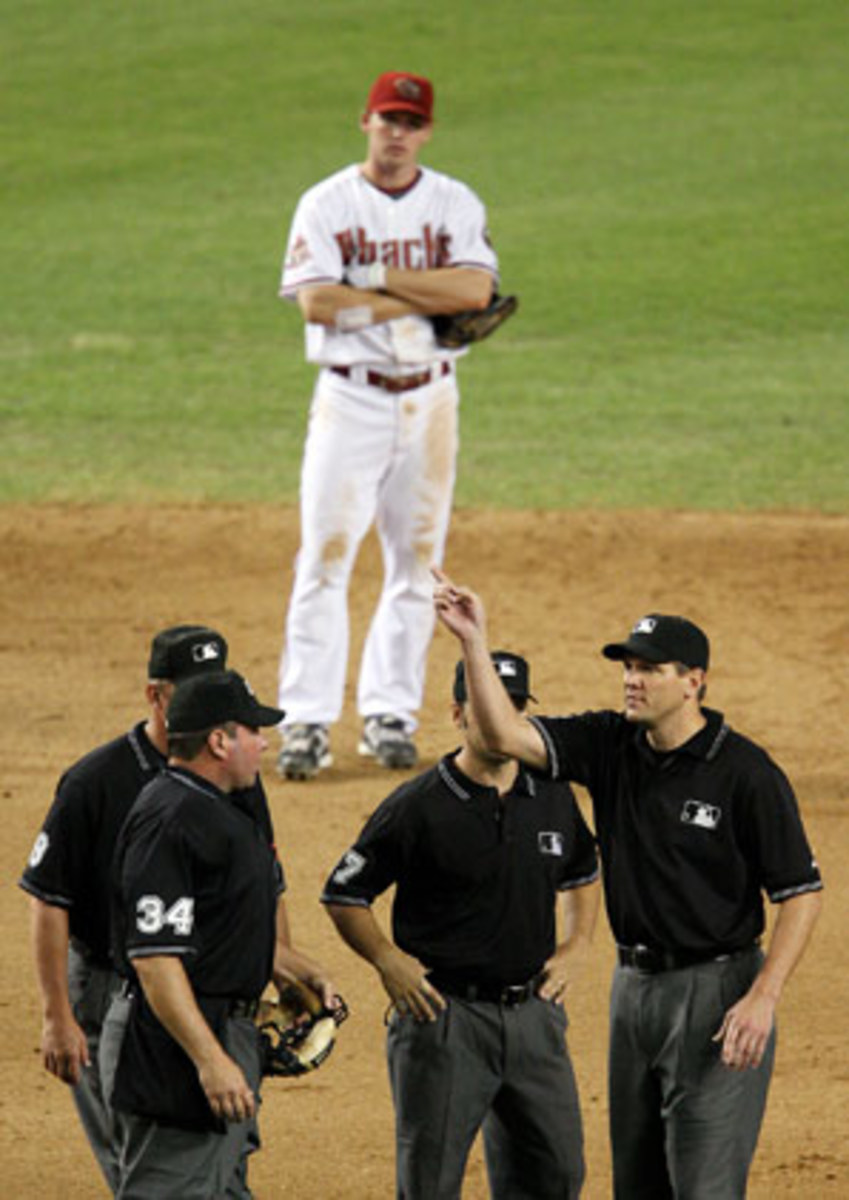
GMs support arrival of replay
Last Sunday, Minnesota Twins leftfielder Jason Kubel crushed a 2-0, eighth inning pitch from Angels reliever Jose Arredondo down the right field line at Angel Stadium. Kubel's shot landed several rows behind the wall, and the only question -- a huge question, in fact, as both the Twins and Angels are battling for playoff position -- was whether the ball was fair or foul. First base umpire Hunter Wendelstedt called it fair, and Kubel began a trot around the bases that would have tied the game at 3-3, even as a television replay clearly showed the ball crossed into foul territory in front of the pole, the white of the baseball clearly visible against the pole's bright yellow. Wendelstedt and his crewmates did not yet have the luxury of reviewing that conclusive replay.
As Angels manager Mike Scioscia stormed out of the dugout, Wendelstedt and his colleagues huddled to discuss the play -- and, this time, they got the call right, sending Kubel back to the batter's box, where he ultimately struck out. (The Angels won 5-3). But even major league umps, the world's best (a point that was underscored by the erratic officiating at the Olympic baseball tournament), don't always get the call right. It's impossible to expect them to do so, to always correctly and instantaneously judge the path of a tiny sphere from a vantage point that is often several hundred feet away. On Tuesday, commissioner Bud Selig announced that help for the umps is on the way: starting on Thursday, the use of instant replay will finally be allowed in baseball, and umpires will now be permitted to review questionable home runs, like Kubel's, in order to be sure that they've made an accurate call.
"The system we have in place will ensure that the proper call is made on home run balls and will not cause a significant delay to the game," said Selig on Tuesday. Each ballpark will have a terminal located near the field (either in a dugout or in the tunnels behind the dugouts) that will include a flat-screen TV, a remote control and a phone, and multiple camera angles of the play in question, culled from all available television broadcasts, will be provided by MLB's command center in New York to an umpire for review. The decision whether or not to review a play will be made by the crew chief, as will the decision whether or not to reverse the original call.
While the midseason implementation of such a significant procedural change is extremely unusual in professional sports -- "It seems unprecedented to me ... unless you count the NBA changing balls in mid-season [in January 2007]," wrote an NL general manager in an email to SI.com -- the general consensus within the game appears to be that replay's time has come. Baseball's GMs voted 25-5 last November to allow instant replay, and a number of disputed home run calls this season (Selig put the number at 16) seems to have swung that tally even more in replay's favor, particularly with the postseason just over a month away.
"I can't see any negative in this," said an AL GM last week, who, wary like his NL colleague of breaking a league-mandated embargo on public comment in advance of Tuesday's official announcement, requested anonymity. "We've got the technology and the ability to get calls right, so we should."
The NL GM feels as if the league's rush to install the system is warranted, in order to have it fully operational before the postseason. "[There was] a bit of a storm brewing that could have resulted in egg on [MLB's] face," he wrote. "To the extent a call would be missed in the playoffs, people might have asked, 'Why didn't MLB move faster to deal with this issue?'"
The system should work fluidly in determining whether a ball was fair or foul, and also on balls that were initially ruled to have stayed in the yard but upon review determined to have left it. In those latter situations, the umpire will reemerge onto the diamond with his pointer finger twirling in the air, and the runners will simply complete their journeys around the bases. The reverse scenario, which should occur significantly less frequently, might prove more problematic: as in cases of fan interference, the crew chief will place runners on the bases he believes they would have reached had the correct ball been made --- always something of an artificial outcome -- when apparent homers are subsequently discovered to have come up short. Less than perfect, yes; but closer to perfect than before, and that's the idea.





